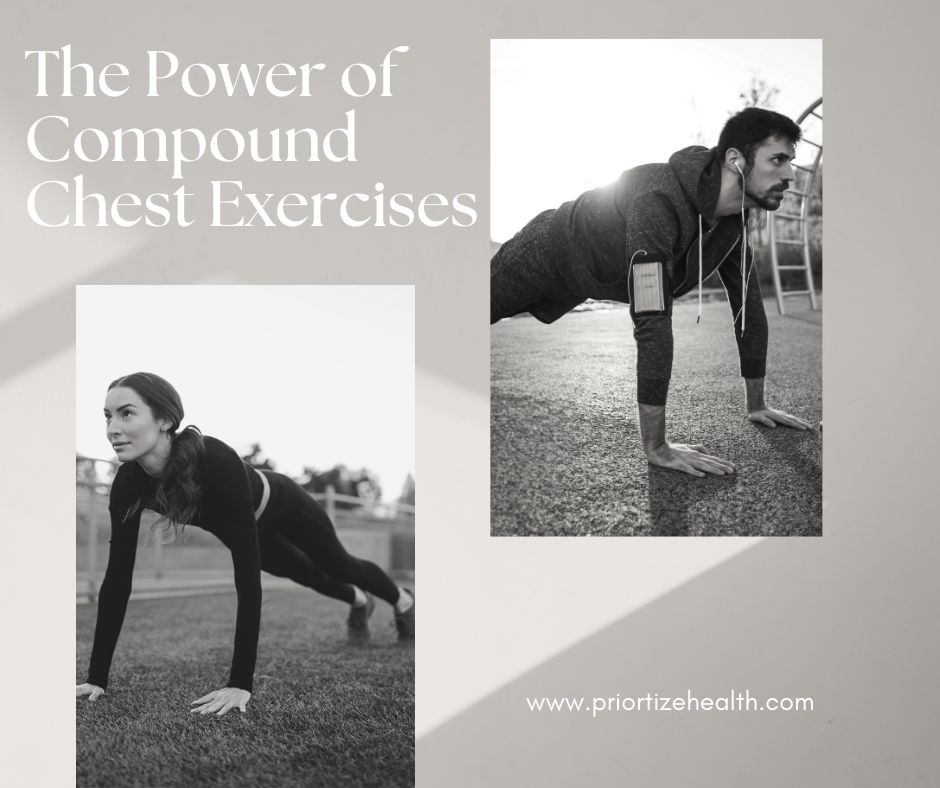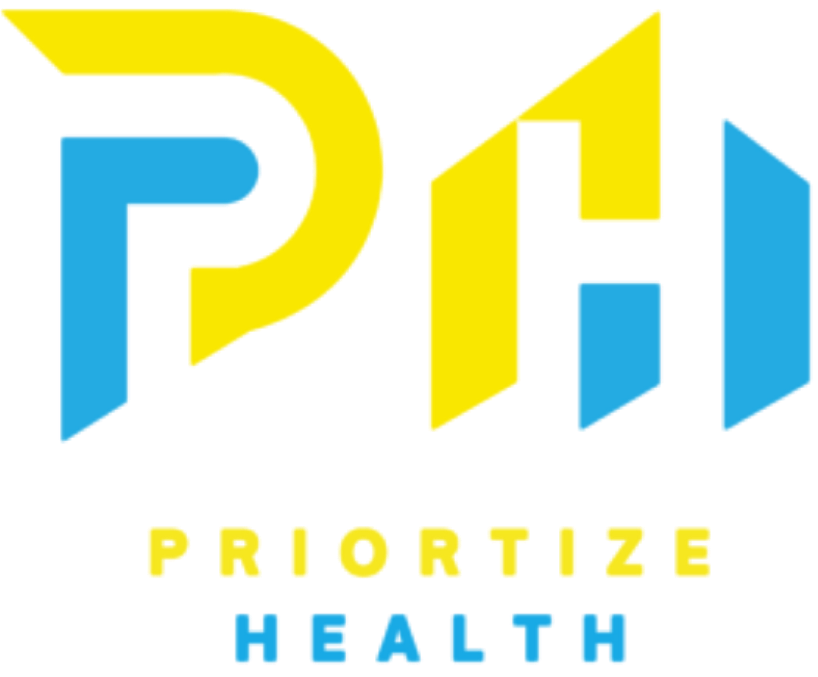
The Power of Compound Chest Exercises
Building a strong and well-defined chest is a fitness goal for many gym enthusiasts. The isolation exercises like chest flies and cable crossovers have their place. But compound exercises are the cornerstone of any effective chest routine. Compound movements engage different muscle groups. This leads to greater muscle activation, strength gains, and efficiency in your workouts. In this article, we’ll delve into the world of compound exercises for the chest. We will also explore how they can help you achieve your fitness goals.
1. Bench Press:
The bench press is a fundamental compound exercise. It targets the muscles of the chest, the pectoralis major. Bench press also engaging the anterior deltoids (front shoulders) and triceps. You can perform it by lying on a flat bench, using either a barbell or dumbbells. There are variations like incline or decline bench presses that are common.
Here’s a breakdown of how to perform the bench press:
1. Setup:
- Lie flat on a bench with your feet planted on the ground.
- Keep your back arched, and your shoulder blades retracted and squeezed together.
- Grip the barbell with your hands wider than shoulder-width apart. You can even hold the dumbbells at shoulder level with your palms facing forward.
2. Execution:
- Unrack the barbell (or start with the dumbbells) and hold it over your chest with your arms extended.
- Lower the weight under control until it touches your chest at about nipple level. It keeps your elbows at a 45-degree angle from your body.
- Pause at the bottom of the movement. Now press the weight back up to the starting position, extending your arms.
3. Breathing:
- Inhale as you lower the weight towards your chest.
- Exhale as you push the weight back up to the starting position.
4. Form Tips:
- Keep your elbows tucked in, rather than flared out, to reduce strain on the shoulders.
- Maintain a slight arch in your lower back to stabilize the spine. Avoid bouncing the weight off your chest. Maintain control throughout the entire range of motion.
- Use a spotter, especially when lifting heavy weights, to ensure safety. Take help if needed.
5. Variations:
- Incline Bench Press: Targets the upper chest.
- Decline Bench Press: Emphasizes the lower chest.
- Close-Grip Bench Press: Places more emphasis on the triceps.
- Dumbbell Bench Press: Allows for greater range of motion and unilateral strength development.
6. Progression:
- Increase the weight lifted over time as you become stronger.
- Aim for progressive overload by increasing either the weight, reps, or sets. This will help to challenge your muscles.
Incorporate the bench press into your chest workout routine. Follow proper form and technique. This can help you build strength, muscle mass. This will also help to define your chest, shoulders, and triceps. It’s a staple exercise in strength training programs. This is essential for anyone looking to develop a well-rounded upper body.
2. Push-Ups:
Push-ups are a classic bodyweight exercise. They target chest, shoulders, triceps, and core muscles. Push-ups are effective for building upper body strength, endurance, and muscle definition. We can perform it anywhere as we don’t need any equipment.
Here’s a step-by-step guide on how to perform a standard push-up:
1. Setup:
- Start in a plank position. Place your hands placed wider than shoulder-width apart on the ground.
- Extend your arms and your hands positioned under your shoulders.
- Keep your body in a straight line from your head to your heels. Engage your core muscles to maintain stability.
2. Execution:
- Lower your body towards the ground by bending your elbows. Keep them close to your body at about a 45-degree angle.
- Lower yourself until your chest touches the ground, or your elbows reach a 90-degree angle.
- Keep your back flat and avoid sagging your hips or arching your lower back.
3. Breathing:
- Inhale as you lower your body towards the ground.
- Exhale as you push yourself back up to the starting position.
4. Pushing back up:
- Press through your palms and extend your elbows to push your body back up to the starting position.
- Extend your arms at the top of the movement. Avoid locking out your elbows to maintain tension on the muscles.
5. Form Tips:
- Maintain a neutral spine throughout the exercise. Keep your head in line with your body and avoid looking up or dropping your head.
- Engage your core muscles and squeeze your glutes to keep your body stable. It will also prevent your hips from sagging.
- Focus on lowering your chest towards the ground. Keep your elbows close to your body to emphasize chest activation.
- If you’re struggling to maintain proper form, perform push-ups from your knees. Elevate your hands on a stable surface.
6. Variations:
- Wide-Grip Push-Ups: Targets the outer chest and shoulders. Place your hands wider than shoulder-width apart.
- Close-Grip Push-Ups: Emphasizes on the triceps and inner chest. Place your hands closer together.
- Decline Push-Ups: It increases the difficulty and emphasizes the upper chest. Perform this push-up by elevating your feet on a bench or platform.
- One-Arm Push-Ups: Challenges stability and increases unilateral strength by performing push-ups with one hand.
Push-ups are a versatile exercise. We can adjust them to accommodate different fitness levels and goals. Whether you’re a beginner or an experienced athlete, incorporate push-ups into your workout routine. It can help you build strength, improve muscle endurance, and enhance upper body fitness.
3. Dips:
Dips are a compound bodyweight exercise targeting the chest, triceps, and shoulders. You can perform them using parallel bars, dip stations, or even sturdy surfaces like the edges of chairs or benches. Dips can be an effective addition to your workout routine. It will help in building upper body strength and muscle mass.
Here’s a step-by-step guide on how to perform dips:
1. Setup:
- Stand between the parallel bars or dip station with your arms extended. Your hands should grip the bars.
- Keep your hands wider than shoulder-width apart. Your palms should be facing inward (or backward, depending on the equipment).
2. Execution:
- Lift yourself by straightening your arms, using your chest, shoulders, and triceps. This will help to push your body upwards.
- Lower your body by bending your elbows and leaning forward. Allow your chest to descend between your hands.
- Lower yourself until your shoulders are below your elbows. You should feel a stretch in your chest muscles.
3. Breathing:
- Inhale as you lower your body towards the ground.
- Exhale as you push yourself back up to the starting position.
4. Pushing back up:
- Press through your palms and extend your elbows to push your body back up to the starting position.
- Extend your arms at the top of the movement while keeping your chest lifted and your shoulders down.
5. Form Tips:
- Keep your body upright. Avoid leaning too far forward or backward to maintain proper alignment.
- Engage your core muscles to stabilize your body throughout the movement. Prevent excessive swinging.
- Focus on controlling the descent and ascent phases of the exercise. This will help to maximize muscle activation and reduce momentum.
- Keep your elbows tucked in rather than flared out. It will help to reduce stress on the shoulders and maintain proper alignment.
6. Variations:
- Weighted Dips: Increase the intensity by wearing a weighted vest. You can even hold a dumbbell between your feet.
- Bench Dips: Perform dips using a bench or sturdy surface. Place your feet on the ground and your hands placed behind you on the bench
- Narrow-Grip Dips: Target the triceps more by bringing your hands closer together on the bars.
- Assisted Dips: Use a resistance band or assisted dip machine. This will provide support if you’re unable to perform full bodyweight dips.
Incorporating dips into your workout routine. It can help you develop strength and muscle mass in your chest, triceps, and shoulders. They are a versatile exercise. We can adjust them to accommodate different fitness levels and goals. Thus, they are a valuable addition to any upper body workout routine.
4. Dumbbell Pullover:
The dumbbell pullover is a compound exercise. It targets the chest, back, and triceps muscles. This is a versatile movement and we can perform it on a flat bench or across a stability ball. It is a back exercise if you perform it in a correct manner. We can engage the chest muscles, particularly the sternal head of the pectoralis major.
Here’s a step-by-step guide on how to perform the dumbbell pullover:
1. Setup:
- Lie perpendicular on a flat bench with only your upper back and shoulders supported.
- Your head should be off the bench, and your feet planted on the ground.
- Hold a dumbbell with both hands, palms facing upward, and arms extended above your chest.
2. Execution:
- Lower the dumbbell in a controlled manner behind your head. Maintain a slight bend in your elbows.
- Keep your core engaged and your lower back pressed against the bench to stabilize your body.
- Lower the dumbbell as far as possible, feeling a stretch in your chest and lats.
3. Breathing:
- Inhale as you lower the dumbbell behind your head, allowing your chest to expand.
- Exhale as you return the dumbbell to the starting position. Contract your chest muscles.
5. Returning to starting position:
- Reverse the movement by contracting your chest and lats to pull the dumbbell back up over your chest.
- Keep your arms bent throughout the movement to maintain tension on the muscles.
- Focus on using your chest muscles to lift the weight, rather than relying on your arms or shoulders.
6. Form Tips:
- Maintain a neutral spine and avoid arching your lower back in excess during the exercise.
- Keep your shoulder blades retracted and depressed throughout the movement. This will help to stabilize your shoulders.
- Avoid swinging the dumbbell or using momentum to lift the weight. Focus on controlled, deliberate movements.
- Adjust the angle of your arms to target different areas of the chest. A slight bend in the elbows may increase chest activation.
7. Variations:
- Stability Ball Dumbbell Pullover: Perform the exercise lying across a stability ball. It adds an element of instability and engages more core muscles.
- Single-arm Dumbbell Pullover: Hold a dumbbell with one hand. Stabilize your body with the other arm, alternating between sides.
Incorporating dumbbell pullovers into your chest workout routine. It can help to target and strengthen the chest muscles, particularly the sternal head of the pectoralis major. Focus on proper form, controlled movements, and increasing the weight as you become stronger. This will help to maximize the benefits of this exercise.
5. Cable Press:
The cable press is a compound exercise. It targets the chest muscles, particularly the pectoralis major, along with engaging the shoulders, triceps, and stabilizer muscles. We can perform it using a cable machine, which provides constant tension throughout the movement. It allows for a full range of motion and effective muscle activation.
Here’s a step-by-step guide on how to perform the cable press:
1. Setup:
- Adjust the pulleys on a cable machine to chest height.
- Attach a straight bar, rope, or handles to the cables
- Stand in the middle of the cable machine and grasp the handles with an overhand grip.
- Take a step forward with one foot to create tension in the cables.
2. Execution:
- Position your feet shoulder-width apart and maintain a slight bend in your knees.
- Pull your shoulder blades down and back to stabilize your shoulders and engage your chest muscles.
- Begin with the handles at chest level, elbows bent at approximately 90 degrees.
- Push the handles forward and away from your body, extending your arms in front of you.
- Keep your elbows bent at the top of the movement to maintain tension on the chest muscles.
3. Breathing:
- Inhale as you lower the handles back towards your chest, allowing your chest to expand.
- Exhale as you press the handles away from your body, contracting your chest muscles.
4. Returning to starting position:
- Reverse the movement by bringing the handles back towards your chest. Perform it in a controlled manner.
- Keep your core engaged. Avoid arching your lower back as you bring the handles back to the starting position.
- Maintain tension in the chest muscles throughout the entire range of motion.
5. Form Tips:
- Keep your wrists straight and aligned with your forearms throughout the exercise. This will help to prevent strain.
- Maintain a neutral spine and avoid excessive leaning or arching of the back.
- Focus on squeezing your chest muscles at the peak of the movement. This will help to maximize muscle activation.
- Avoid using momentum or jerking movements. Focus on smooth and controlled repetitions.
6. Variations:
- High Cable Press: Adjust the pulleys to a higher position to target the upper chest muscles.
- Low Cable Press: Adjust the pulleys to a lower position to target the lower chest muscles.
- Single-Arm Cable Press: Perform the exercise one arm at a time. This will address muscle imbalances and engage core stability.
Incorporating cable presses into your chest workout routine can help to target and strengthen the chest muscles. It provides constant tension and a full range of motion. Experiment with different handle attachments and cable heights. This will help to target various areas of the chest and add variety to your workouts.
FAQ’s:
Ans: Yes, push-ups are excellent for targeting the chest muscles. They engage the pectoralis major, the primary muscle of the chest, along with the anterior deltoids and triceps. Push-ups provide a challenging bodyweight resistance. It stimulates muscle growth, strength, and endurance in the chest. Variations such as wide-grip, close-grip, and decline push-ups target different areas of the chest. Incorporating push-ups into your workout routine can help develop a strong, well-defined chest. There is no need for specialized equipment.
Ans: Yes, the chest press is a compound exercise. It involves movement at joints and engages muscle groups. The primary muscles targeted are the pectoralis major (chest), anterior deltoids (front shoulders), and triceps. We can activate stabilizer muscles, such as the rotator cuff muscles and core muscles. This will help to maintain proper form and stability during the movement. Compound exercises like the chest press are efficient for building strength, muscle mass, and functional fitness. They recruit a large number of muscles in one movement.
Ans: The number of push-ups considered strong varies depending on factors such as age, gender, weight, and fitness level. For men, being able to perform 40-50 consecutive push-ups is often considered strong. Women around 20-30 consecutive push-ups may denote strength. These numbers represent above-average upper body strength and muscular endurance. It’s important to focus on proper form, gradual progression, and fitness. We should not consider on the number of push-ups performed to gauge strength and fitness levels.






2 Comments
You’re very welcome! I’m glad to hear that you’re open to exploring various topics. If you have any specific questions or areas of interest you’d like to delve into, please feel free to share them. Whether it’s about the latest advancements in technology, recent scientific discoveries, thought-provoking literary works, or any other subject, I’m here to offer insights and assistance. Just let me know how I can help, and I’ll do my best to provide valuable information and engage in meaningful discussions!
You’re very welcome! I’m glad to hear that you’re open to exploring various topics. If you have any specific questions or areas of interest you’d like to delve into, please feel free to share them. Whether it’s about the latest advancements in technology, recent scientific discoveries, thought-provoking literary works, or any other subject, I’m here to offer insights and assistance. Just let me know how I can help, and I’ll do my best to provide valuable information and engage in meaningful discussions!